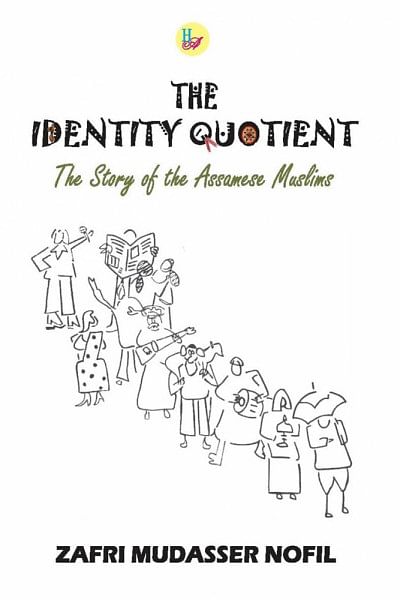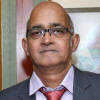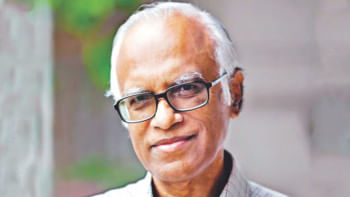An exhaustive study of Muslims in Assam

There are some books that immediately grab your attention by dint of their titles. Indian journalist Zafri Mudasser Nofil's "The Identity Quotient: The Story of the Assamese Muslims", published by Har-Anand Publications, New Delhi, is one such book. The publication of the 179-page book could not have possibly come at a more opportune time with fresh assembly elections in the north-eastern Indian state of Assam just a couple of months away, setting the stage for playing out of linguistic, ethnic and religious fault lines among the voters. In recent times, the contentious issues of National Register of Citizens (NRC) and Citizenship Amendment Act (CAA) have heated up the political cauldron in Assam, especially for its 1.07 crore Muslim residents, who constitute 34.22 percent of the state's total population of 3.12 crore (as per the last census in 2011).
Identity politics in Assam, Zafri's debut book would like us to conclude, began in 1836 when the Assamese language was replaced by Bangla in official communications and in education. Six years down the line, however, Assamese was restored as the official language with the help of American Baptist missionaries and Assamese "visionary" Anandaram Dhekial Phukan. But by that time, a sense of disquiet had already crept into the hearts of those whose mother tongue is Assamese. Over the following decades, what have sharply accentuated that feeling of hurt were mainly economic backwardness, "geographical seclusion" (of the entire North East India) and "invasive and illegal migration from across the border." All this had had the cumulative effect of giving birth to the movement against "foreigners" (read Bangla-speaking Hindu and Muslim migrants from across the border) from late 1960s to its culmination in 1985 with the signing of the Assam Accord.
The replacing of Assamese as official language and subsequent years of underdevelopment blended into what came to be known as "Axomiya Jatiyotabad" (Assamese nationalism). And this, along with the vote-bank politics of regional and national political parties, made migration from across the border a "volatile issue," as Assam's former police chief and poet Harekrishna Deka is quoted in the book as saying.
The author, who belongs to Dibrugarh, Assam, devotes two long and separate chapters on the controversial NRC and CAA issues, the fierce opposition to which contains strains of Axomiya Jatiyotabad. An interesting observation by Zafri is that "the opposition to CAA in Assam is more about how many get included because of the legislation, and not who are excluded."
Tracing the evolution of Islam and Muslims in Assam, the author tells us that most of the Muslims in the state are converts. "Muslims started making their appearance in Assam in the medieval times", in early 13th century. Delving into historical records, he says a man belonging to Assam's local Mech tribe—who guided Qutubuddin Aibak's military general Muhammad bin Bakhtiyar, popularly known as Bakhtiyar Khalji, to its invasion of Assam (then known as Kamarupa) in 1206 AD—"is believed to be the first person in the area to have embraced Islam."
The book divides the Muslims of Assam into mainly six groups: Deshis of lower Assam, the Goriyas and Moriyas of upper Assam, the Julhas, comprising mainly of tea garden workers brought by the British from outside, the Syeds, and Bangla-speaking Muslims of Barak Valley. They are dealt with in great detail. The book segregates immigrant Muslims, who are termed as "Miyas" in Assam, from the six main groups because most of them are of Bangladeshi origin and live in "char" areas of rivers.
Most importantly, the author proceeds to discuss these different Muslim groups from the point of view that "Muslims of Assam are different from [their co-religionists] in the rest of the country." To buttress his belief, he says, "Muslims [here] take pride in calling themselves Assamese first." According to the book, "Muslim settlers in Assam, after they had made this land their permanent home, adopted Assamese as their language and accepted local habits and customs that helped them identify themselves as locals." The Muslims of Assam "unhesitatingly fought against the Mughal army that consisted of a good fraction of the followers of Islam, when the latter attempted to invade Assam." The author's assertion that Muslims of Assam are different from Muslims in the rest of India is likely to leave views divided on the extent of Muslims' integration with the social mainstream in other parts of India.
A great value addition to the "The "Identity Quotient" are the chapters on Muslim culinary and food habits in Assam, contribution of Muslim writers and singers, the film fraternity in the state and marriage customs among Muslims, which are a combination of Islamic customs and "some traditions common among Assamese Hindus closely entwined." For instance, "sindoor" (vermillion) is still used by Deshi Muslims in seven districts of Assam, albeit symbolically, during marriage, a hangover from Hindu traditions, says the book with empirical evidence. Quoting extensively from historical documents and interviewing leading Muslims in different fields, the expansive focus of the book on different aspects of the community in Assam makes it a must-read for the students and researchers. But the price of 595 Indian rupees could come in the way of the book becoming more easily accessible to a wider audience.
Pallab Bhattacharya is a special correspondent for The Daily Star. He writes from New Delhi, India.

 For all latest news, follow The Daily Star's Google News channel.
For all latest news, follow The Daily Star's Google News channel. 



Comments